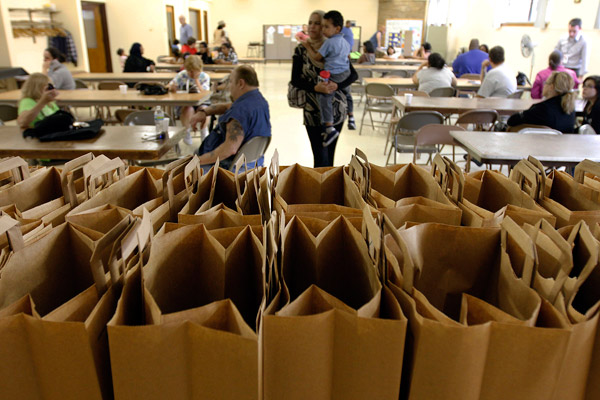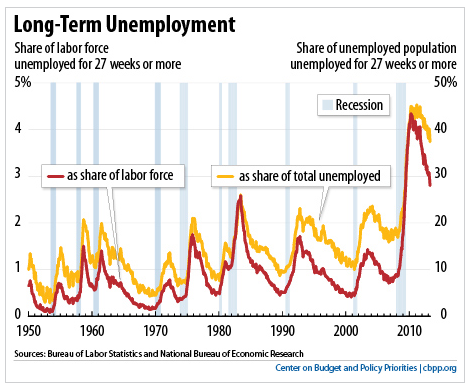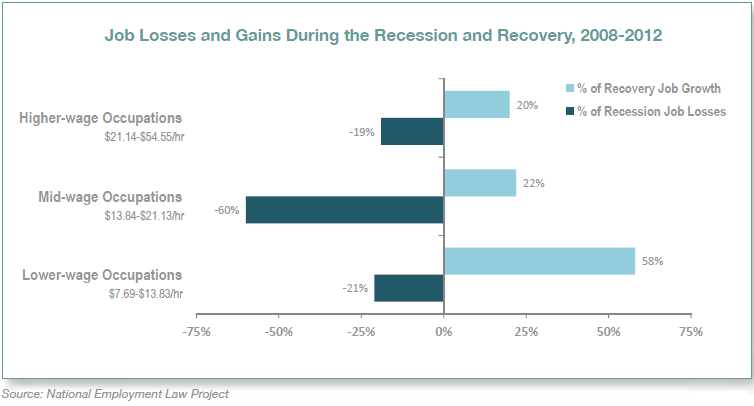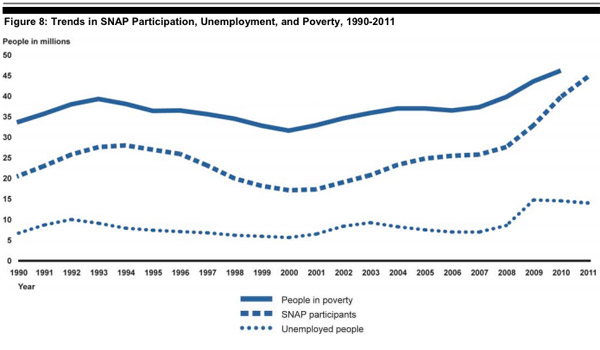
Photo: Phil Velasquez/Chicago Tribune
Food pantry, United Methodist Church of Worth.
The Trib editorial board pulled out both barrels on the massive increase in food stamp usage in Illinois and the United States yesterday, devoting not one…
Instead of worrying about our neighbors' waistlines, we should turn our attention to the ever-expanding SNAP program. More than 47 million people get food stamps, up from 17 million in 2000. That's far more than can be blamed on the recession and slow recovery. Because of relaxed eligibility standards, millions of people are getting food stamps who wouldn't have qualified in the past. Congress is struggling to get its arms around the program, which accounts for 80 percent of spending under the farm bill.
…but two editorials to the subject.
The number of TANF recipients in Illinois has risen by 21 percent in the last 10 years, from 108,528 people in 2003 to 131,497.
The food stamp population has risen much more dramatically: 958,798 in 2003 to more than 2.1 million now, a 114 percent increase.
No red flags, lawmakers? Those numbers cannot be explained away as a side effect of a slow economy. We've got a bigger problem here.
They're right; it can't be explained entirely by a "slow" economy, not even one of the worst economies of the past century. There are a lot of reasons for it, including expanded eligibility as part of the economic stimulus, which added 473,000 households (2.6 percent) to the rolls in 2010, according to the GAO.
* Participation rates are much higher than they were 10 years ago. In other words, not everyone who's eligible actually bothers to receive food stamps. In 2003, the national rate was 56 percent. In 2010, it was 75 percent nationwide and 80 percent in Illinois. (In 2010, only five states had participation rates over 90 percent.)
What explains the massive expansion in recipients? A lot of it is an increase in participation rates. In 2003, around 1.5 million people in Illinois were eligible, and around 60 percent participated. In 2010, the most recent year for which estimates are available, around two million people were eligible, and around 80 percent participated.
States have worked to increase participation rate—for instance, making online, phone, and mail applications available, which has substantially increased the participation rate in rural areas. It used to be that urban eligibles were more likely to participate; now the opposite is true. Expansion of eligibility is only part of the puzzle.
* Food stamps have replaced other forms of welfare. SNAP (Supplemental Nutrition Assistance Program) use hasn't just increased in a vacuum. As Jason DeParle and Robert Gebeloff noted in a 2010 New York Times piece, the SNAP rolls have increased since welfare reform decreased TANF (Temporary Assistance to Needy Families) recipients:
The main cash welfare program, Temporary Assistance for Needy Families, has scarcely expanded during the recession; the rolls are still down about 75 percent from their 1990s peak. A different program, unemployment insurance, has rapidly grown, but still omits nearly half the unemployed. Food stamps, easier to get, have become the safety net of last resort.
The unemployment rate in Illinois in January 2003 was 6.6 percent; in January 2013 it was nine percent, with almost 200,000 more people unemployed than ten years ago. Yet the number of TANF recipients increased by less than 30,000. TANF is just a lot more strict now, and food stamps are taking up some of the slack.
* Long-term unemployment is unusually high. Really, there hasn't been anything like it in 60 years.

When unemployment insurance runs out, food assistance is the fourth most common fallback, behind "sold some possessions," "borrowed money," and "cut back on doctor visits."
* Employment is recovering; middle-class jobs aren't. A lot of people on food stamps are employed; they just don't make that much money. And there are a lot more people with those sorts of jobs (via).

A decade ago, when food-stamp participation among eligible people was low, one criticism was that food stamps were too difficult to obtain for the working poor, who were described as an "afterthought." States have redesigned the food-stamp system to make it easier for the eligible working poor to obtain benefits; and the ranks of the working poor have swelled.
* The economy is slowly improving; poverty rates aren't. Here's what it looks like, through 2011:

The poverty rate held steady in 2012; this was considered good news.
But that's not to say that SNAP spending won't come down. The Republican-controlled House is gunning for $2.5 billion a year in cuts; the Democratic-controlled Senate's current proposal would cut SNAP spending by $400 million a year.


